This weekend I ought to be in Las Vegas, playing at the National Open, but instead I’m at home playing my computer. The nice thing about playing the computer is that I can forget all of my losses and show you only my wins.
So after losing about ten in a row against Shredder, I finally won one that shows the perils of playing without a plan. The funny thing about computers is that they always play without a plan, yet they seldom pay for it. In this particular case, though, I think that Shredder’s aimless play was somewhat reminiscent of human play. Its rating for this game was set at 2201.
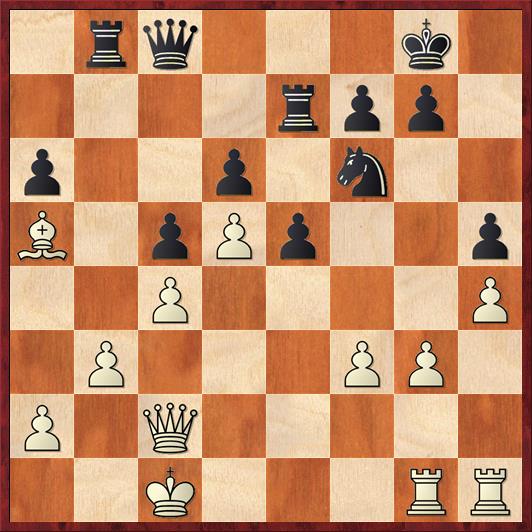 Position after 27. … Qc8. White to move.
Position after 27. … Qc8. White to move.
FEN: 1rq3k1/4rpp1/p2p1n2/B1pPp2p/2P4P/1P3PP1/P1Q5/2K3RR w – – 0 28
This was the position where I took my time-out. How do you evaluate it, and what do you think White should be doing?
Here’s how I looked at the position. Obviously I have been building toward the g3-g4 break, but 27. … Qc8 prevented that. If I play 28. g4 now it will be a pawn sacrifice. Moreover, I didn’t think it looked like a particularly good one (but more on that below). So I came to the conclusion that I needed to improve my position first.
But what improvements can I make? I love my bishop where it is. It’s amazing how that one piece makes my queenside completely unassailable by his combined forces of two rooks and queen. I foresaw that I might need to move the bishop eventually, but I wanted to do it only after Black has made a commitment with a move like … e5-e4. If I play 28. Bc3 or 28. Bd2 right now, Black can immediately play 28. … a5!? and start getting counterplay.
My queen also seems to be in the right place. I looked a bit at 28. Qe2, but I concluded that after the simple 28. … Qd7, followed possibly by … Rbe8, White is not going to be able to hold back the … e4 break and then my queen will be awkwardly positioned.
What about the rooks? I looked at 28. Rh2 and at 28. Re1. The idea of the first is to double on the g-file (or maybe the e-file), but I think it is just too slow; Black gets good play with 28. … e4. And the same is true of 28. Re1. To my great dismay, Black seemed to be okay after 28. Re1 e4!? 29. Bc3 Qf5 30. Re3 Qg6! If I play in principled fashion with 31. R1e1, inviting Black to take on g3, he doesn’t have to. He (or “it”) can simply play 31. … R8e8, allowing me to win a pawn with 32. Bxf6 Qxf6 33. fe Re5 (diagram). White’s extra pawn is totally crippled, and White’s pieces are crippled by the need to defend it. I think the position is totally equal, and this is the way that Black should have played.
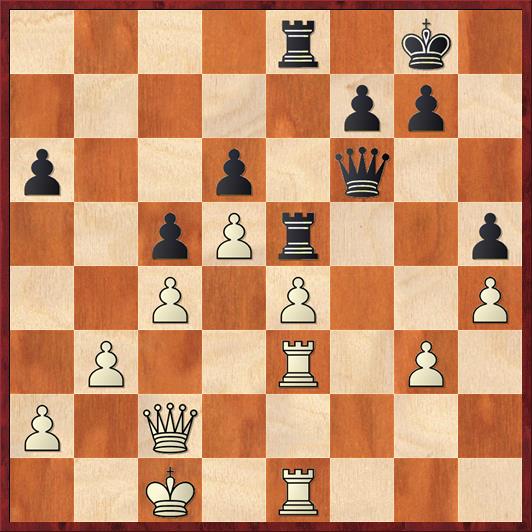 Position after 33. … Re5 (analysis). A satisfactory position for Black.
Position after 33. … Re5 (analysis). A satisfactory position for Black.
FEN:4r1k1/5pp1/p2p1q2/2pPr2p/2P1P2P/1P2R1P1/P1Q5/2K1R3 w – – 0 34
So after a long think, I decided the position was equal! None of my possible moves seems to lead to an advantage.
That brings us to a good question: What do you do when you can’t see any way to get an advantage? The answer, I decided, was to play moves that are correct on general principles. I want to play the most positionally sound move, the one that leaves me in the best condition to carry on the fight. In this case, I felt that the right choice was 28. Re1, and that is what I played. The point is that … e5-e4 is Black’s main try for the initiative. If I can’t stop it, I should at least resist it the best that I can. If worst comes to worst and all the heavy pieces get swapped off, I would actually be quite happy because I would have good chances to win the B-vs.-N endgame.
And here is another point: Your opponent won’t always see things the way you do. I thought 28. … e4 was essential. But my opponent might not agree. If he doesn’t play it, then maybe I will be able to close down that threat and take the initiative on the kingside. And that’s basically what happened!
My opponent, being a computer, did not appreciate the need for a plan and did not aim for a target position, like the one I just showed you. Instead, it just wasted time on moves that did nothing. It started with 28. … Reb7?, a terribly misguided move. As I’ve just said, it will never be able to make any progress on the queenside as long as my bishop stays on a5. So its rooks belong in the center, fighting for control of the e-file. After this move, I no longer have to worry about the … e4 break at all.
I played 29. Re2 Qd7 30. Rg1 Qh3 31. Rh2 Qc8 32. Rhg2 Qh3 33. Bc3. Here I thought that I had gotten as far as I could with the bishop not playing a role in the attack, and it was time to bring it to the long diagonal, with possible ideas of playing f4. Of course, Black can now initiate his queenside play with the pawn sacrifice 33. … a5, but I had carefully timed my move Bc3 so that it occurred when his queen was very far from the queenside, thus making the attack less likely to succeed. Perhaps for that reason, Shredder played 33. … Qd7, bringing the queen back toward the queenside, and I played 34. g4 (diagram).
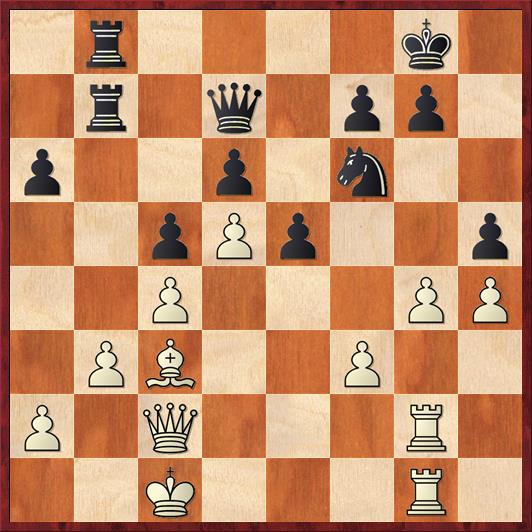 Position after 34. g4. Black to move.
Position after 34. g4. Black to move.
FEN: 1r4k1/1r1q1pp1/p2p1n2/2pPp2p/2P3PP/1PB2P2/P1Q3R1/2K3R1 b – – 0 34
In this position, White has accomplished all of the goals initiated by the 28th move. I have launched my kingside pawn storm, and meanwhile Black has still not yet played either … e4 or … a5. White’s play has been motivated by a plan, and Black’s has not.
Black continued its incomprehensible queen maneuvers: 34. … hg 35. fg Qc7 36. h5 Qc8 37. Qe2 Nh7 38. g5 Qh3 39. Rg3 Qh4 40. h6! (diagram)
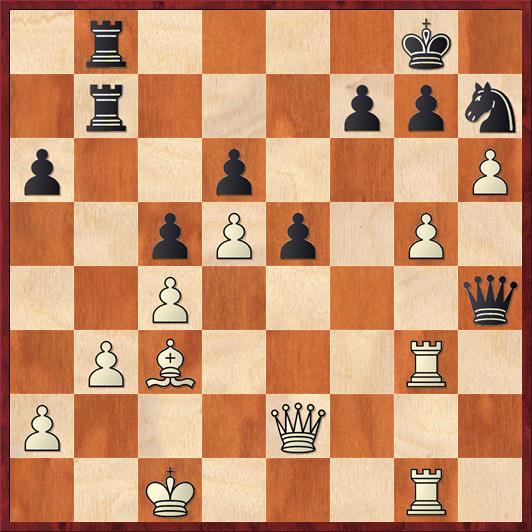 Position after 40. h6. Black to move.
Position after 40. h6. Black to move.
FEN: 1r4k1/1r3ppn/p2p3P/2pPp1P1/2P4q/1PB3R1/P3Q3/2K3R1 b – – 0 40
Touchdown! White forces a breach in Black’s castled position. To make matters worse, Black’s queen is far offside and can get trapped if it’s not careful. For example, if 40. … Nf8 41. Qg2! Ng6? the queen is lost after 42. Rg4. Or if 40. … Nf8 41. Qg2 Qf4+ 42. Bd2 Qd4 43. Kc2 Ng6 44. Be3 Black’s queen is amazingly trapped in the center of the board!
Instead Shredder lashed out with 40. … f5?!, the sort of move that computers (and humans) play when they know they’re busted. But especially against a computer, you’ve got to be careful! I played 41. gf Qxh6+ 42. Bd2 Qxf6 43. Rg6 Qf5.
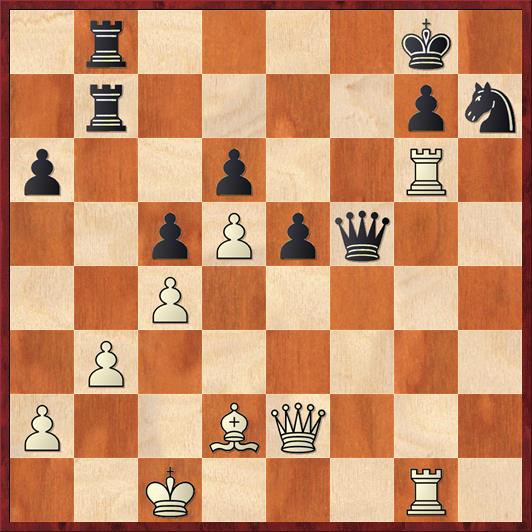 Position after 43. … Qf5. White to move.
Position after 43. … Qf5. White to move.
FEN: 1r4k1/1r4pn/p2p2R1/2pPpq2/2P5/1P6/P2BQ3/2K3R1 w – – 0 44
Black’s last move set a trap. Do you see what it is?
All of my good work would have come to naught if I had played 44. Rxd6?? Then Black would turn the tables with 44. … Rxb3!! 45. ab Rxb3, threatening mate on b1, and White has to give up his queen to stop it.
It’s important in chess, and in life, to keep your eyes on the prize! In chess, the prize is the king. For that reason, it is infinitely stronger to win the g-pawn than the d-pawn. Therefore I played
44. Bh6!
After this Black’s position crumbles. Shredder played 44. … Qf8 and I snagged the queen for a rook and piece with 45. Rxg7+ Rxg7 46. Rxg7+ Qxg7 47. Bxg7 Kxg7 48. Qg4+ Kh8 49. Qd7 and the rest is easy. Black’s queenside pawns are easy pickings for White’s queen.
If only the computer were always so clueless …
P.S. Remember, way back in the initial position, when I rejected the pawn sac 28. g4!? It turns out I should have taken a closer look at it. The reason I rejected it was that I failed to consider 28. g4!? hg 29. h5!, offering a second pawn sacrifice. How often two pawn sacrifices are better than one! Indeed, Black cannot accept the second gift because after 29. … gf? 30. h6 g6 31. Rxg6+! fg 32. Qxg6+ White has a winning attack. Instead Rybka recommends 29. … Qd7 or 29. … Kh8 with a +0.27-pawn advantage for White, but this would have been a complicated and fun position to play. I’m sorry I didn’t see this; on the other hand, it was interesting to see how the conservative, “wait and see” approach with 28. Re1 paid off in the end.


